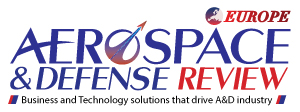Tim Dutson, Director of Quality at Intergalactic, has spent the past four years building a robust quality management system that meets industry standards and drives improvement. With experience at L3 Harris and Raytheon, he brings deep expertise in supplier quality, Six Sigma and cross-functional leadership. He oversees quality, configuration management, operations and support functions, with a focus on collaboration, process optimization and growth.
Recognizing Tim Dutson’s extensive experience in quality management, this interview offers valuable insights into the challenges of maintaining quality in aerospace and defense. His approach focuses on building robust systems, optimizing supplier relationships and fostering team confidence.
At a Glance:
• Building Robust Quality Systems – Focused on developing and maturing quality management systems that meet industry standards while driving continuous improvement in aerospace and defense.
• Optimizing Supplier Relationships – Emphasizes clear communication and regular touchpoints with suppliers to ensure alignment and quality across diverse systems and projects.
• Fostering Team Confidence – Prioritizes training and mentorship to build team confidence, ensuring quality engineers and inspectors feel empowered in their decision-making.
• Driving Operational Excellence – Advocates for collaboration across departments, utilizing practical strategies like the PDCA cycle to navigate challenges and drive quality in high-stakes environments.
Building High-Performing Quality Teams
Leading quality teams in aerospace and defense is never easy. My approach is to strike the right balance between compliance and continuous improvement while creating an environment where my team feels well-trained, confident, and empowered to make the right calls. Quality often comes down to decisions made in real time, and my role is to ensure the team is prepared for whatever comes their way.
Training plays a key role in building this confidence. Budgets can be tight, but I prioritize finding cost-effective, high-value learning opportunities. I want my team to have the tools and knowledge they need because confident teams consistently make better decisions— and better decisions drive stronger, higher-quality outcomes.
Mentorship is another cornerstone of my leadership style. I keep my schedule flexible to provide guidance whenever needed, whether for my direct reports or cross-functional teams. Just as important, I believe in leading by example. We all have days when we’re not at our best, but showing up with our A-game is essential in leadership.
Ensuring Quality Across Systems and Suppliers
Maintaining quality across diverse systems, suppliers, and project phases is a complex task, but I’ve found that the fundamentals always work. I rely on the Plan-Do-Check-Act (PDCA) cycle as a foundation for everything we do. In a high-mix, low-quantity environment like ours, specific tools such as Six Sigma or PPAP aren’t always practical or cost-effective, so I focus on executing the basics with precision— plan thoroughly, execute properly, verify outcomes, and adjust as needed.
Planning is often overlooked, but it is the most critical step. Even after contracts or purchase orders are awarded, I review quality requirements and technical specifications to ensure alignment. Although it may feel repetitive, this prevents misunderstandings later and gives suppliers a clear blueprint for success.
“We all have days when we’re not at our best, but showing up with our a-game is essential in leadership”
Communication is equally vital. Regular touchpoints with suppliers and internal teams keep everyone aligned, whether a project is just beginning or nearing completion. These conversations help us identify and address issues before they escalate, making quality a collaborative effort rather than a box to be checked.
Risk Management and Regulatory Adherence in Innovation
Innovation comes with risk, and managing that risk effectively is critical. The process should be tailored to the company’s size and project complexity. At Intergalactic, a simple Excel-based tracking system works well, while larger companies may require more sophisticated tools. Regardless of the system, the principle remains the same: identify risks early, review them often, and take proactive action.
Too often, I’ve seen organizations document risks at the start of a project and never revisit them until something goes wrong. I prefer quarterly risk reviews to ensure risks are actively managed and new ones are identified before they become critical.
Regulatory adherence can feel heavy-handed, but it is no different from meeting a customer requirement. In aerospace and defense, we ensure that evolving regulations are communicated clearly and integrated into projects as they progress. This approach allows innovation to move forward without compromising compliance or safety.
Navigating the Path to Excellence in Quality Assurance
The most valuable lesson I’ve learned is that leadership isn’t about titles—it’s about action. Whether you’re a director, engineer, or inspector, your impact comes from the work you do and the relationships you build. Some of the best ideas I’ve seen come from fresh graduates who bring new perspectives and challenge the status quo.
Building relationships is equally important. Quality teams are often seen as the “police” who point out problems, but when we shift to supporting other departments and collaborating, we become partners in the larger business strategy. This shift changes how quality is perceived and strengthens its role in driving success.
Lastly, I believe in lifelong learning. Every day is an opportunity to learn—whether from new hires, peers, or customers. Staying humble, open, and curious ensures we not only improve our processes but also grow as professionals.






![Protecting and Analyzing Data from Unmanned Platforms at the Edge of the Battlefield $box_cxo_headline_new[cxo_ids]](https://www.aerospacedefenserevieweurope.com/newstransfer/upload/450x308_vxrH.jpg)
![Evolving Quality Assurance and Control for Advanced Manufacturing: An Opportunity for the U.S. Leadership $box_cxo_headline_new[cxo_ids]](https://www.aerospacedefenserevieweurope.com/newstransfer/upload/450x308_t7z0.jpg)
![The Fast Moving Space Industry is Embracing New Methods $box_cxo_headline_new[cxo_ids]](https://www.aerospacedefenserevieweurope.com/newstransfer/upload/450x308_2hdz.jpg)
![Digital Engineering at Rheinmetall Air Defense $box_cxo_headline_new[cxo_ids]](https://www.aerospacedefenserevieweurope.com/newstransfer/upload/450x308_fFZ4.jpg)
![Time to Bring the Benefits of Coalitions to Bear $box_cxo_headline_new[cxo_ids]](https://www.aerospacedefenserevieweurope.com/newstransfer/upload/450x308_emp4.jpg)
![Redefining Future Operations through Technology Enabled Services $box_cxo_headline_new[cxo_ids]](https://www.aerospacedefenserevieweurope.com/newstransfer/upload/450x308_4zcK.jpg)
![The Resurgence of The Manpads Threat and Importance of Advanced Laser DIRCM $box_cxo_headline_new[cxo_ids]](https://www.aerospacedefenserevieweurope.com/newstransfer/upload/450x308_z91T.jpg)
![Smart Manufacturing and Industry 4.0 $box_cxo_headline_new[cxo_ids]](https://www.aerospacedefenserevieweurope.com/newstransfer/upload/450x308_i8o6.jpg)
![Navigating Aircraft Maintenance Quality Challenges: Insights from a Quality Manager $box_cxo_headline_new[cxo_ids]](https://www.aerospacedefenserevieweurope.com/newstransfer/upload/156-450x308_wVm3.jpg)
![Moog's Ascendance in the eVTOL/AAM Market: Insights, Achievements, and Future Endeavors $box_cxo_headline_new[cxo_ids]](https://www.aerospacedefenserevieweurope.com/newstransfer/upload/450x308_XHxS.jpg)
![Jetsetting Journeys: A Career Soaring from JFK to Unifi's Unique Aviation Landscape $box_cxo_headline_new[cxo_ids]](https://www.aerospacedefenserevieweurope.com/newstransfer/upload/450x308_f76K.jpg)

